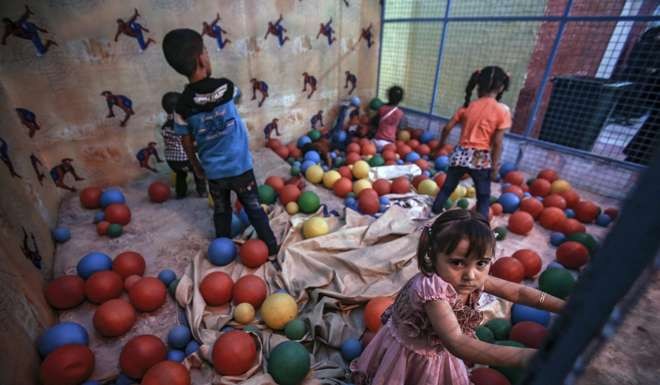
‘Children are playing in the street’: ceasefire brings rare calm to war-torn Syria
A ceasefire in Syria brokered by the United States and Russia has brought a rare period of calm to hard-hit parts of the country, activists said Tuesday, sending normally terrified residents out to shop, play and visit loved ones.
The nationwide truce went into effect at sundown Monday and continued to hold despite reports of sporadic violations.
After some airstrikes and shelling in the early hours, “by early morning every report we have been seeing indicates a significant, significant drop in violence,” UN envoy Staffan de Mistura said Tuesday evening in Geneva.


“People are going about their business, and children are even playing in the street,” Mohamed Omar, a civil defence volunteer in the rebel-held area of Aleppo, a city that has been devastated by the five-year conflict.
“People feel a lot more safe today because there are no airstrikes,” he said. “Things seem calmer.”
The cease-fire is part of a broader deal between Washington and Moscow to eventually launch joint strikes against Islamic militants in Syria and possibly pave the way for a negotiated end to the war. The United States has backed some Syrian rebel factions battling the government, and is leading a coalition conducting strikes against the Islamic State in Syria. Russia has sent warplanes and troops to aid Syrian President Bashar al-Assad.

A major road designated under the agreement as a neutral humanitarian corridor remained the scene of clashes. Syrian government forces are required by the deal to withdraw from Castello Road in Aleppo province, and rebels also should refrain from launching attacks.
However, in a Russian Defense Ministry broadcast aired on the state-funded RT network, two Russian military commanders are shown ducking for cover as their position comes under fire. De Mistura said that allegations of mortar shelling on the road, “by the opposition, in this case,” had been reported.
De Mistura said he expected the aid convoys to begin moving “very soon.” The trucks destined for rebel-held eastern Aleppo, he said, will move once “notification” of their contents is formally provided to the Syrian government, and opposition forces inside the city formally agree to UN distribution terms.
Aid destined for other parts of the country, where more than a dozen besieged areas have been without food deliveries, in some cases for years, is still awaiting Syrian government authorization letters, de Mistura said.
He indicated that, under the terms of the US-Russia agreement, the aid should begin to flow within the first 48 hours of the ceasefire.
The United Nations needs to make sure its staff and partners “are not in mortal danger” before starting aid convoys, said Jens Laerke, a spokesman for the UN coordination agency in Geneva, the Associated Press reported.
But whether the deal can keep violence in check remains to be seen.
According to the timetable laid out by Secretary of State John F. Kerry and Russian Foreign Minister Sergei Lavrov, the first seven days are crucial. Under the deal, Russia is responsible for keeping the Syrian air force out of the air, while the United States must stop attacks by rebel forces.
If the ceasefire holds, the two sides will start working out plans to share intelligence and conduct coordinated airstrikes, first against a former al-Qaeda affiliate, Jabhat Fatah al-Sham, or Front for the Conquest of Syria, and eventually against the Islamic State.
But a number of rebel groups have been fighting side by side with Jabhat Fatah al-Sham, raising concerns among opposition members that other factions will be targeted as well. The US administration has acknowledged the overlap between the group, and warned the rebels that they must separate themselves from the terrorists or risk being targeted by coordinated US and Russian strikes against the militants once they begin.
In Kafranbel in Idlib province, also in the north, Abu Muhammad said residents are relieved that no airstrikes have occurred there.
“We haven’t heard any planes in the sky, and we haven’t documented any [ceasefire] violations in our area,” said Muhammad, an activist and lawyer.
But people “are skeptical about whether it is going to work,” he said.

